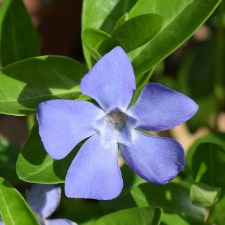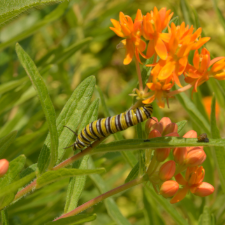
Get to Know Your Neighbours
Climate change is wreaking havoc on the planet in numerous ways, through floods, fires and droughts. But those aren’t the only ways we’re seeing its impact. A changing climate opens up opportunities for more invasive species. Look around your yard or nearest natural area. It’s likely there are numerous invasive species around. An application like iNaturalist can help with identification.
Why are invasive species a problem?
Invasives have little to no natural predators which can lead to large, unchecked populations. This is problematic because they outcompete other (native) species for food or territory and can weaken an ecosystem (how living organisms interact with each other and their surrounding environment). This makes the ecosystem more vulnerable to the effects of climate change.
Invasive species are also one of the main drivers that reduce biodiversity (the different kinds of life found in an area), which is critical to keeping an ecosystem healthy. If one or more native species is displaced from its environment because of an invasive species, it can harm the entire balance of the ecosystem.
How does climate change make invasive species worse?
A warmer climate creates new areas and pathways for invasives to establish. For example, melting sea ice is opening up new shipping routes for invasives to spread and occupy areas they wouldn’t typically be found.
More frequent extreme weather and events like floods and droughts cause stress on all species. Another stressor on species is the changing seasonal patterns, like milder winters in Ontario. The combination of extreme weather and seasonal weather changes places added stress on both native and invasive species, but invasive species in general are better equipped to handle the new stressors, and are likely to adapt much more rapidly than their native counterparts.

What can you do?
- Learn about invasive species and report sightings to the Invading Species Hotline by calling 1-800-563-7711 or online at: eddmaps.org.
- Never transport firewood long distances – it can harbour invasive pests. Remember the adage: Buy local; burn local.
- Never release or deposit unwanted pets or plants, including yard waste, into the natural environment.
- Never move aquatic plants and animals from one body of water to another. If you have a boat, make sure you clean it thoroughly before moving to another body of water.
- Don’t flush plants or dead aquarium pets down the toilet. Seal them in plastic and dispose in the garbage.
- If fishing, use artificial lures or bait that is local to the area you plan to fish.
- To encourage more diversity, consider planting some native plants in your garden (but don’t relocate plants from your home to cottage or vice versa – this can inadvertently spread invasive plants and even insects). Planting with native plants helps support other local native species. That’s because many native species rely specifically on other native species for their survival.
Did you know?
The Monarch Butterfly, now unfortunately considered an endangered species, only lays eggs on Milkweed plants. This relationship between the two is considered a symbiotic relationship. Monarch caterpillars are able to ingest the toxins in the Milkweed plant, making them poisonous to predators. This toxicity remains even when the caterpillars become butterflies. Potential predators know this and avoid eating them. In return for the protection they get from eating Milkweed, Monarchs feeding on the nectar from the Milkweed flowers helps pollinate the Milkweed and ensures its continued survival.
There are many types of Milkweed that are native to Canada that can host the Monarch. Here are four that you might want to consider for your garden with a few comments about them to help you decide which one you might like to plant.

Common Milkweed (Asclepias syriaca)
As its name implies, this is the Milkweed most commonly seen. Its white to light pink flowers bloom in mid summer and are quite fragrant. It’s quite the prolific spreaders by rhizomes underground and best suited for larger gardens.
Butterfly Milkweed (Asclepias tuberosa)
This is a shorter variety with bright orange blooms. It’s one of the most drought tolerant plants once established. It doesn’t like being too wet and has a deep taproot, making it more difficult to transplant.
Swamp Milkweed (Asclepias incarnata)
This variety prefers wetter conditions and is thus found in wetlands, wet roadsides, floodplains and wet meadows. Despite its love of wet conditions, it tolerates drought conditions quite well once established.
Whorled Milkweed (Asclepias verticillata)
This is the shortest of the Milkweeds in this list and is found in prairies and meadows. It’s perfectly suited to gardens with white fragrant blooms that begin in mid-summer into fall. It does well in infertile soils.
If you have specific questions about climate change and invasive species, please send them to communications@LSRCA.on.ca.
Customer Service:
Phone: 905-895-1281
Toll Free: 1-800-465-0437
Email: info@LSRCA.on.ca
